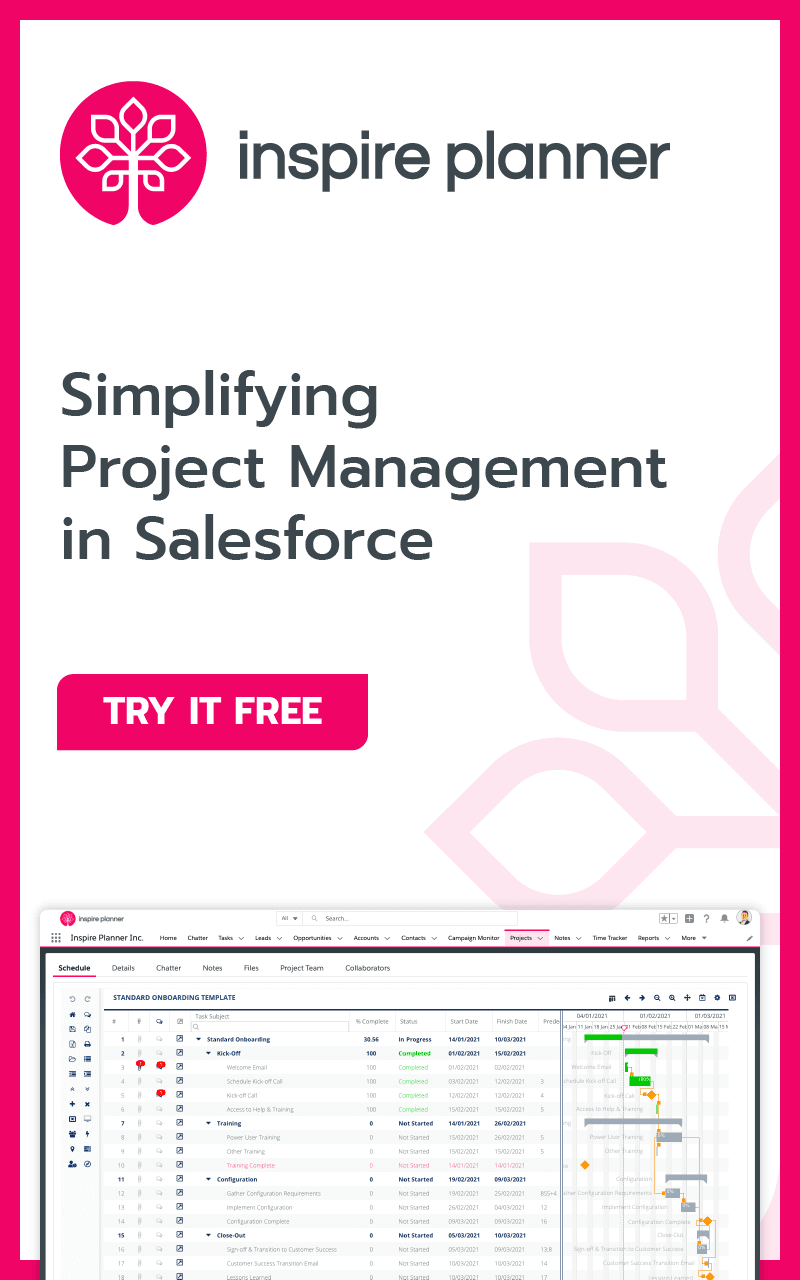Your Salesforce Workload Is Increasing: Why Project Management Is More Important Than Ever
Project ManagementSalesforce
Business Manager at Mason Frank International and a specialist Salesforce recruiter, Rob Morgenroth, shares with us the importance of project management when using Salesforce. You might be surprised by the potential knock-on effect of bad planning!
The demand for Salesforce in businesses around the world continues to grow. In addition to being consistently named the world’s number one sales-centric CRM, Salesforce continues to introduce new products and solutions to its arsenal of business tools, as well as release regular updates to the platform with exciting new features.
As Salesforce staffing experts, we’ve observed this first-hand. Not only do businesses need implementation specialists to initially introduce the software to their organization, but they’re also looking for platform experts to upgrade and increase functionality on their existing Salesforce system. Our market research supports this.
High Demand Can Lead to a Bottleneck in Project Management
In our annual independent Salesforce market survey, 72% of respondents working for Salesforce Partners reported that their workload had increased compared to 12 months ago, while 64% of overall respondents (Partners/Salesforce Customers/ISVs) reported the same. Clearly, Salesforce adoption and upgrades are on the rise.
While increased demand is a good thing for businesses in the Salesforce ecosystem, the existing talent market simply can’t facilitate all of this extra work. This creates a bottleneck, where businesses can be forced to wait months or even years before securing the expertise required to move forward with their project.

Planning a Salesforce Project is Paramount
This is why it’s so important to mitigate the amount of work it’ll take to bolster your Salesforce build. I use the word ‘mitigate’ because a lot of the work Salesforce professionals have to do involves righting the wrongs caused by end-users—bad data hygiene, poor administration practices, and inefficient business processes.
These things are unfortunately a slippery slope; once bad practices have crept into your business, it becomes very difficult to revert to a better, cleaner process. It’s like teaching an old dog new tricks, only this dog is already covered in fleas and ticks, and they’re sucking the life out of him. You really need to plan ahead of a project to ensure good practices and data hygiene throughout, otherwise, your Salesforce build could be left in a state that many specialists would consider ‘unrecoverable’.
Having said that, Salesforce is its own animal. There’s so much you can do on Salesforce that the likelihood is you’ll be using it to house the majority of your business data. Planning projects will largely involve dipping in and out of your CRM to gather data or measure the impact of your project against existing processes. This is fine, it can be done, but it’s a massive drain on time and can seriously complicate the project.
Consider this: how much extra work will be created by manually exporting data from your CRM and inputting it to a third-party project management system? Can your Salesforce team dedicate extra resource to this project when they’re already stretched? Will you put your customer data at risk by crudely hauling it from one system to another? You can never be too careful with data privacy, especially with your primary customer database.

The Solution: Stay on Salesforce for Project Management
One way to eliminate these risks entirely is to choose a project management solution native to Salesforce. This means all your valuable customer and business data will be readily accessible without having to export/import across systems, which is both time-efficient and more compliant with data privacy regulations.
It also means you can make live updates to any plans you have based on tangible business data. If you need to delay the launch of a new campaign as a result of a change to BAU or an unexpected surge of activity in one area of the business, you’ll have that information readily accessible, your system will recognize it, and you’ll be able to make the necessary adjustments accordingly.
If you use more than one Salesforce product, you’ll know that integration is one of the main benefits of putting all your eggs in the Salesforce basket. The convenience of being able to have a single customer view without flitting between tabs and applications has made a real difference to many of our clients—we’d always recommend taking a look at using integrated systems, and this often means experimenting with new ISVs.




